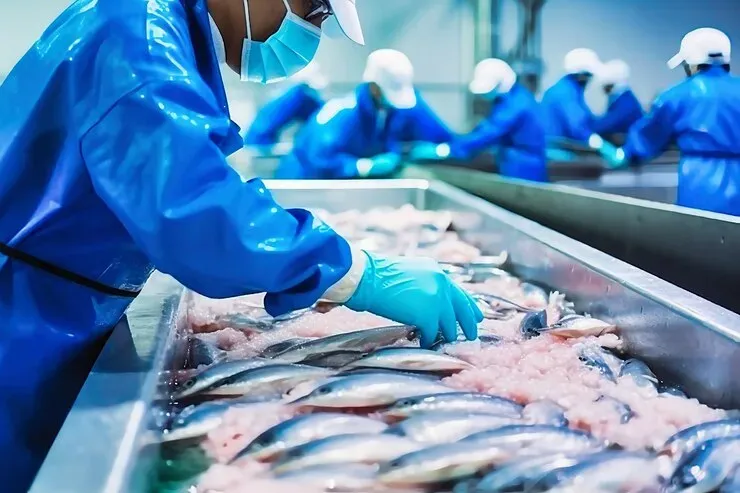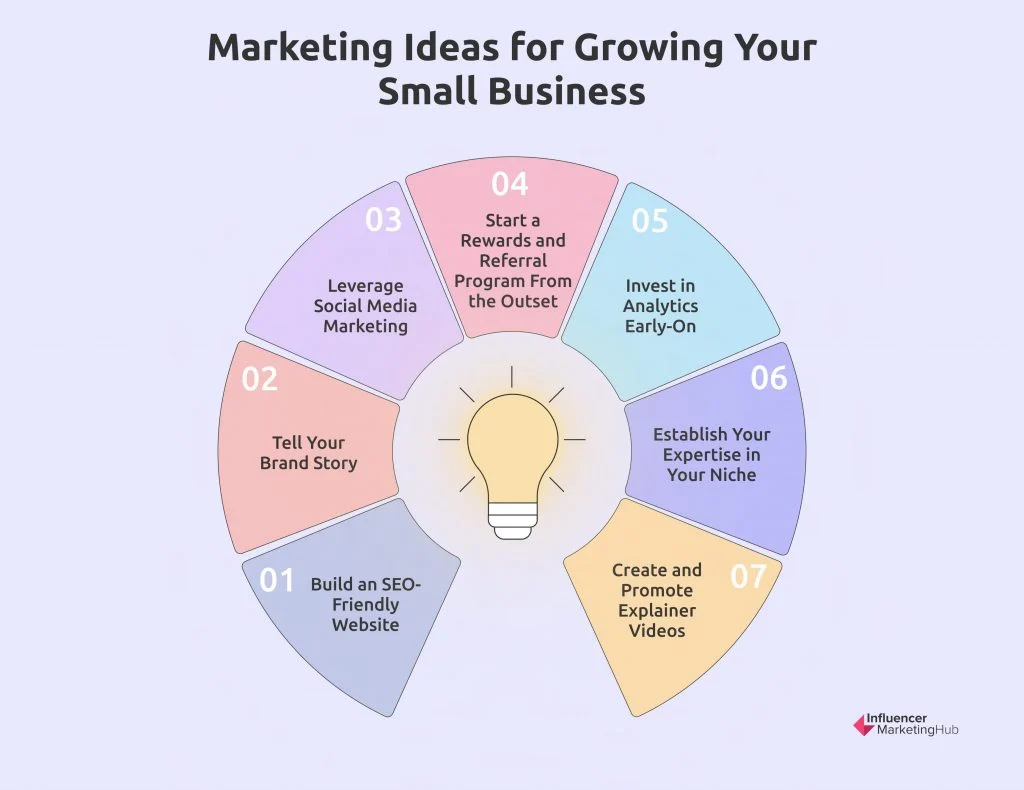AI fish processing is revolutionizing the seafood industry, merging cutting-edge technology with humane practices to enhance the quality of fish dishes. A local startup, Shinkei Systems, utilizes artificial intelligence and robotics to implement the traditional ikejime technique, which is renowned for preserving the delicate sashimi flavor. By automating the fish-handling process, the company aims to improve the efficiency and quality of fish while minimizing stress experienced by the animals. The innovation not only promises better taste and longevity for consumers but also reflects a commitment to humane fish processing, bridging the gap between tradition and modern culinary standards. Investors are flocking to this transformative venture, intrigued by its potential to reshape how fish is caught, processed, and enjoyed in restaurants across America.
In the realm of seafood innovation, state-of-the-art robotics and AI-driven techniques are now being harnessed to improve the methods used in fish processing. Shinkei Systems, a groundbreaking company, has adopted an age-old Japanese method known as ikejime to enhance the flavor and storage life of seafood. By integrating automated solutions, the firm aims to make humane fish handling practices more accessible, benefitting both the aquatic life and the end consumers. This unique approach not only elevates culinary standards but also ensures a more ethical process in seafood preparation. Positioned at the intersection of technology and gastronomy, Shinkei is set to disrupt traditional fish processing methods while introducing a new era of quality and sustainability.
The Innovations of AI Fish Processing
AI fish processing is revolutionizing the seafood industry by integrating advanced technologies with traditional methods. Startups like Shinkei Systems are at the forefront of this transformation, utilizing artificial intelligence to enhance the quality and longevity of fish dishes. With their AI-driven robot, ‘Poseidon’, they’re employing the ikejime technique, a process that ensures fish are handled humanely while optimizing flavor and texture. This innovative approach not only improves the sustainability of fish processing but also caters to discerning consumers looking for high-quality sashimi and seafood.
The introduction of AI into fish processing brings a precision that human labor often struggles to match. The Poseidon robot is designed to execute the ikejime technique with pinpoint accuracy, quickly dispatching fish to reduce stress and improve taste. As a result, fish processed through this method can maintain their freshness for significantly longer periods. With the backing of substantial investments and a focus on humane practices, AI fish processing is likely to reshape how consumers engage with seafood, ultimately leading to healthier, more gourmet culinary experiences.
Understanding the Ikejime Technique
The ikejime technique is an ancient Japanese method that enhances the flavor and quality of fish post-capture, making it a preferred choice among sushi chefs worldwide. This technique involves a swift and humane dispatching of fish, crucial for preserving the texture and taste, particularly in delicacies like sashimi. Shinkei Systems aims to bring this traditional technique to American consumers through automation, making high-quality fish more accessible while maintaining ethical standards in fish processing.
By implementing the ikejime method, Shinkei’s Poseidon robot can stop the buildup of stress hormones that compromise the fish’s quality. Traditionally, this method requires skilled hands and experience, but the integration of robotics and AI makes it scalable. As Chef Saif Khawaja emphasizes, the goal is to provide consumers with fish that not only tastes better but is also processed humanely, minimizing the fish’s suffering during the catching process. This combination of tradition and technology is likely to create a new culinary trend centered around quality seafood.
Robotic Fish Handling: The Future of Seafood Processing
Robotic fish handling is paving the way for a new era in seafood processing. With innovations like Poseidon, Shinkei Systems is demonstrating how automation can streamline the fishing process while ensuring the humane treatment of marine life. By replacing labor-intensive tasks aboard fishing boats, robotic fish handling not only improves efficiency but also enhances welfare standards in the seafood industry. This advancement aligns with modern consumers’ increasing demand for ethical and sustainably sourced food products.
As the demand for high-quality seafood rises, so too does the importance of efficient processing methods. Robotic systems like Poseidon can process fish in mere seconds, a feat that greatly reduces the time from catch to market. This speed is critical in maintaining fish quality, especially for premium offerings like sashimi. By marrying humane practices with cutting-edge technology, Shinkei is setting a benchmark for the future of seafood processing and influencing how restaurants and consumers perceive seafood quality.
The Role of Robotics in Humane Fish Processing
Humane fish processing is becoming increasingly essential as consumers become more conscious of animal welfare in their food choices. Shinkei’s Poseidon robot embodies this trend by employing the ikejime technique to dispatch fish quickly and humanely. This method prevents the suffocation distress that many fish experience when caught, elevating the standards for ethical seafood processing. With Poseidon, Shinkei not only focuses on efficiency but also prioritizes the humane treatment of fish, appealing to a growing demographic that values ethical consumption.
Furthermore, the integration of robotics into fish processing operations enhances traceability and transparency in the seafood supply chain. Consumers are increasingly looking for assurances that their seafood is sourced sustainably and ethically. By using AI and robotics, companies like Shinkei can provide detailed information about the handling and processing of their fish, reinforcing consumer trust. This added layer of accountability is crucial in a market that values not just the quality, but the ethical standards behind the food we consume.
Sashimi Flavor Enhancement Through Advanced Techniques
Enhancing the flavor of sashimi has long been a pursuit for chefs who emphasize the importance of freshness and quality. The ikejime technique used by Shinkei Systems is pivotal in this enhancement, as it prevents the stress hormones that compromise flavor from developing in the fish. With advancements in robotic processing, the quality of sashimi can be significantly elevated, making it more appealing to fine dining establishments and consumers alike.
The appeal of well-prepared sashimi lies not only in its taste but also in the texture, which can be greatly affected by how the fish is processed. Post-capture handling techniques, such as the ones employed by Poseidon, minimize blood accumulation and promote optimal texture, creating a sashimi experience that stands out. As Shinkei Systems makes these methods more widely available, it sets the stage for an exciting renaissance in the sashimi dining experience across the United States.
Market Potential of AI Fish Processing Technologies
The market potential for AI fish processing technologies is substantial, given the rising demand for quality seafood in the U.S. Shinkei Systems has already secured notable investments, with a total of $30 million in funding, highlighting the confidence investors have in the future of automated fish processing. By making high-end fish processing methods, such as the ikejime technique, more accessible, Shinkei aims to carve out a niche in both the retail and restaurant sectors, catering to a clientele that values quality and ethical considerations.
As consumer preferences shift towards sustainably sourced and gourmet seafood, companies like Shinkei are positioned to capitalize on this trend. The integration of robotics in fish processing not only enhances flavor and shelf-life but also meets consumers’ growing expectations for humane treatment of animals. By continuing to innovate and expand its product offerings, Shinkei has the potential to redefine the seafood market landscape in America.
Shinkei Systems: Bridging Tradition and Technology
Shinkei Systems exemplifies the successful fusion of tradition and technology, particularly through its utilization of the ikejime technique within modern fishing practices. By employing AI-driven robots like Poseidon, traditional fish-handling methods are brought into the contemporary realm, ensuring that the flavors associated with fine sushi and sashimi are preserved while avoiding the shortcomings of manual processing. This synergy of old and new is not only innovative but speaks to a broader trend of integrating cultural practices within technological frameworks.
As the company continues to grow, it will play a pivotal role in educating consumers and industry stakeholders about the importance of these traditional techniques in achieving superior seafood quality. The commitment to enhancing the flavor profiles of fish while adhering to humane processing standards could position Shinkei as a leader in the seafood industry, influencing practices around the globe and promoting a greater appreciation for the culinary arts tied to marine sourcing.
The Ethical Implications of Automated Fish Processing
The advent of automated fish processing brings significant ethical implications, particularly in how fish are caught and handled. Shinkei’s focus on humane dispatch methods through the ikejime technique highlights the importance of reducing the suffering of marine life during capture. As consumers become more conscious of the ethical considerations surrounding their food choices, innovations like Poseidon can help address these concerns by ensuring that fish are treated with care both during and after their catch.
Moreover, the use of robotics in fish processing contributes to a more sustainable seafood industry. Automated techniques can lead to less wastage and ensure that fish are processed in a manner that respects their life and contributes to overall ecosystem health. This alignment of advanced technologies with ethical standards is crucial as the industry seeks to meet the demand for both quality and responsibility in seafood production.
Expanding Offerings: The Future of Shinkei’s Product Line
Looking ahead, Shinkei Systems plans to expand its product line to include a variety of fish species, adapting the techniques of their Poseidon robot to new culinary offerings. The anticipated introduction of salmon and red snapper positions Shinkei to tap into broader markets and meet diverse consumer tastes, ensuring a steady growth trajectory for the company. By diversifying its fish offerings, Shinkei can cater to a wider audience, including gourmet chefs and everyday consumers seeking high-quality seafood.
Such expansion not only opens up additional revenue streams but also further establishes Shinkei as a household name within the gourmet seafood market. With an emphasis on quality and humane processing practices, the company aims to solidify its reputation and establish partnerships with renowned restaurants and retailers. This strategic growth plan positions Shinkei to become a leading influence in the evolution of premium seafood consumption in America.
Frequently Asked Questions
What is the role of AI fish processing in enhancing sashimi flavor?
AI fish processing, specifically through Shinkei Systems’ Poseidon robot, utilizes the traditional ikejime technique to enhance sashimi flavor. By quickly dispatching fish, this method reduces stress hormones that negatively impact taste, resulting in better texture and prolonged shelf life for sashimi dishes.
How does the ikejime technique improve fish quality in AI fish processing?
The ikejime technique, employed by AI fish processing systems like Poseidon, quickly kills fish post-capture. This minimizes stress and lactic acid buildup, ensuring the fish remains fresh and flavorful, which is especially important for high-quality sashimi.
What advantages does robotic fish handling provide in humane fish processing?
Robotic fish handling, as seen with Shinkei’s Poseidon, offers a humane fish processing alternative by quickly dispatching fish, thus avoiding the distress associated with traditional methods. This aligns with the goal of promoting more ethical practices in the seafood industry.
What innovations does Shinkei Systems bring to AI fish processing?
Shinkei Systems innovates in AI fish processing by integrating robotics with traditional techniques like ikejime. This not only enhances sashimi flavor but also automates a previously labor-intensive process, making high-quality fish more accessible and improving humane practices.
How does AI fish processing affect the sustainability of fish sourcing?
AI fish processing using robotic systems like Poseidon can lead to more sustainable practices by ensuring higher quality fish that last longer, reducing waste. Additionally, it allows fishermen to operate more efficiently, ultimately benefiting both the industry and the environment.
Why is the integration of AI in fish processing significant for fine dining?
The integration of AI in fish processing is significant for fine dining because it enhances the flavor and quality of dishes like sashimi, allowing restaurants to offer superior seafood. Shinkei Systems’ approach not only ensures fresh, high-quality fish but also promotes humane processing methods.
What are the latest developments in Shinkei Systems’ AI fish processing technology?
Shinkei Systems has recently expanded its Poseidon robotic units, now active on multiple fishing vessels. With ongoing funding and advancements, they are set to introduce more seafood options, including salmon and red snapper, revolutionizing AI fish processing in the industry.
How do consumers benefit from AI-driven fish processing technology?
Consumers benefit from AI-driven fish processing through access to fresher, higher-quality seafood that is both flavorful and handled humanely. Shinkei’s innovations not only enhance the taste of sashimi but also promote ethical sourcing practices.
What seafood products are currently available through Shinkei’s AI fish processing?
Currently, Shinkei’s AI fish processing yields black cod and black sea bass sold under the Seremoni brand, with upcoming offerings including salmon and red snapper, available at select retailers and upscale restaurants.
How does Shinkei Systems plan to scale its AI fish processing operation?
Shinkei Systems plans to scale its AI fish processing operation by deploying additional Poseidon units on fishing vessels and expanding its product offerings to include more seafood varieties, thereby increasing availability in grocery stores and restaurants across the U.S.
| Key Point | Details |
|---|---|
| Startup Overview | Shinkei Systems is a startup in El Segundo leveraging AI and robotics to enhance fish quality. |
| Technology Used | Poseidon, an AI-driven robot, employs the ikejime technique for humane fish processing. |
| Goals | To provide better-tasting, longer-lasting fish that is processed humanely. |
| Funding | Raised $22 million recently, with total funding reaching $30 million. |
| Deployment | Currently operating 4 units in the Pacific and Atlantic; plans for 10 more. |
| Processing Method | Ikejime technique that minimizes stress and enhances fish quality. |
| Ethical Focus | Developing humane methods to dispatch fish to avoid distressing conditions. |
| Current Products | Black cod and black sea bass sold under the Seremoni brand. |
| Future Expansion | Plans to include salmon and red snapper in product offerings. |
Summary
AI fish processing is transforming how seafood is harvested and prepared, with Shinkei Systems leading the charge in revolutionizing traditional techniques. By utilizing AI and robotics, Shinkei not only enhances the flavor and shelf-life of fish but also aims to establish more humane practices in the industry. This innovative approach, exemplified by their Poseidon robot, signals a progressive shift in fish processing that could redefine consumer experiences and ethical standards in seafood production.



